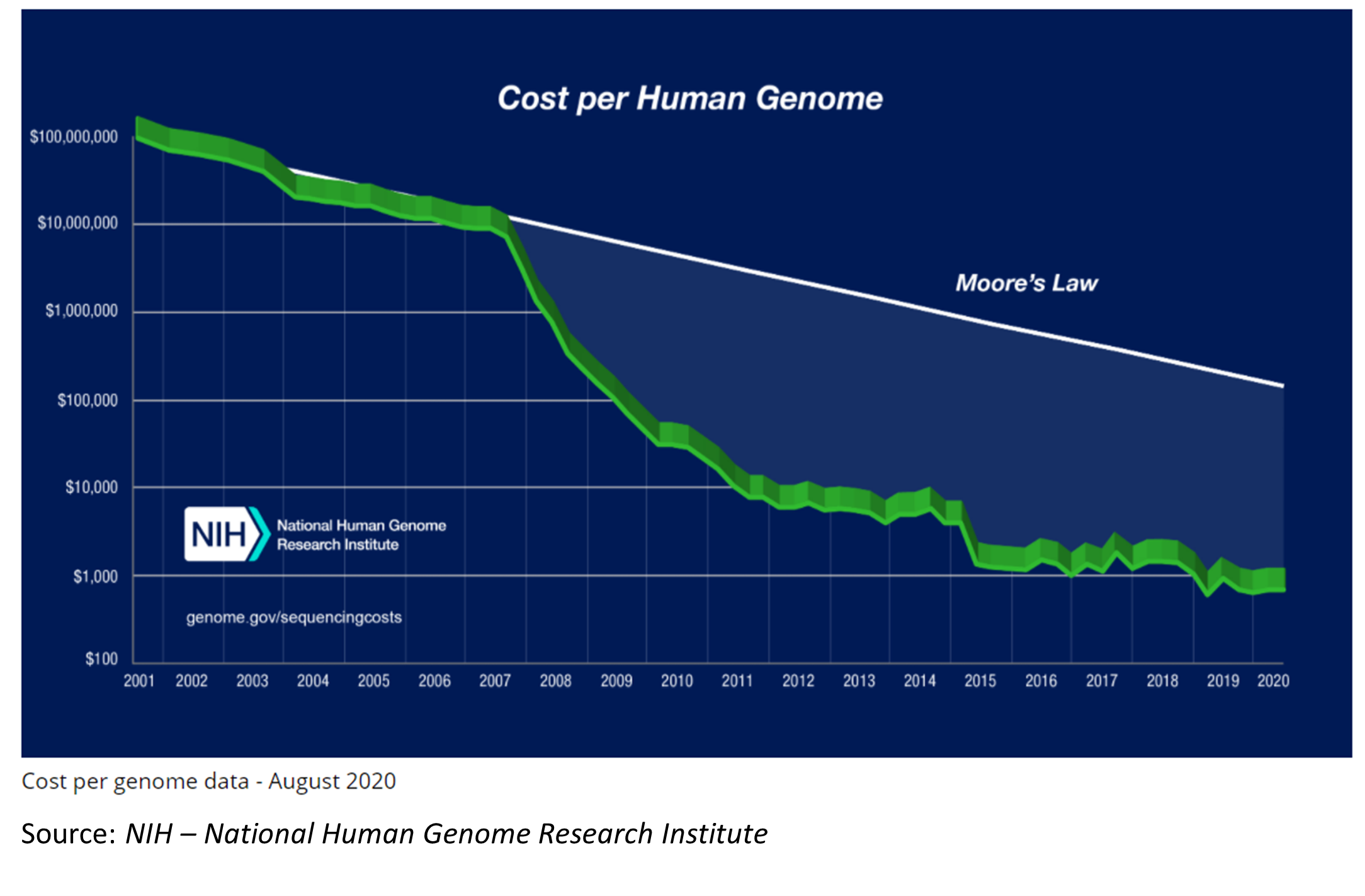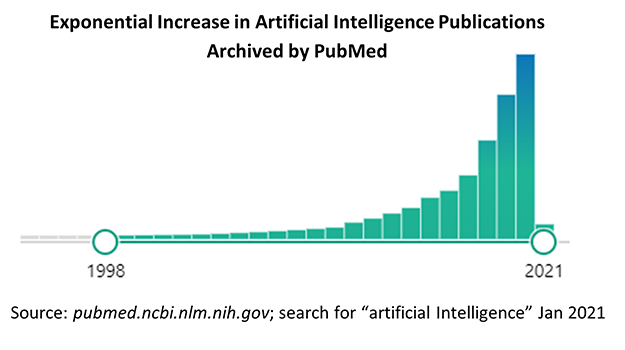10 Technologies That Will Change the Way You Practice During Your Career: Part 1

The stethoscope is a medical technology that is revered and still in use, despite being developed in the early 1800s. Since that time there have been many advancements and iterative improvements with a more rapid expansion in medical technologies over the past century. This progression shows no sign of slowing down, and some think it is increasing exponentially as current developments compound with past inventions and knowledge. The next two to three decades are going to bring on major changes to medical care and practicing later in your career will definitely look very different than how you practice now. Here is a list of 10 technologies on the horizon. While this is not at all a comprehensive list, these are some of the most exciting and revolutionary technologies being developed now, in no particular order. To cover this, this list has been split into a two-part series.

- CRISPR
Clustered Regularly Interspaced Short Palindromic Repeats, or its fancier and streamlined name, "CRISPR", has been making news over the last decade due to how it has revolutionized genetic engineering. This was initially developed and used by the food industry but is now being applied to all fields of cellular and genetic research. Given how predominant CRISPR is now, this technique will undeniably be crucial to the future of clinical practice. Initially discovered as an enzyme in certain prokaryotic organisms to function as a defense against bacteria, the CRISPR system can be used to cut DNA based on certain genetic sequences. A new sequence can then be entered into the strand allowing for gene editing. In 2019, the first clinical treatment using CRISPR was completed in a young woman afflicted with Sickle Cell Disease. She underwent experimental infusion with autologous stem cells where a normal copy of the hemoglobin gene was edited in to replace the abnormal one she was born with – so far with excellent results. These developments have been such an important technology that the 2020 Nobel Prize in Chemistry was awarded to the two original developers of CRISPR. The future of this technology will need to weigh the benefits against the ethical considerations in its use in humans; however, the potential for CRISPR is huge. - Artificial Intelligence
The field of artificial intelligence (AI) has been exploding over the past decade. The concept of AI is not new and has been in development since the late 20th century. AI is just making its way into medical applications. Machine learning has been commonplace in Fortune 500 companies – powering spam mail filters, internet searches, stock market predictions and product recommendations. Recently, we have seen some of these algorithms being utilized in wearable devices and consumer products such as the KardiaMobile application for atrial fibrillation recognition. Past landmarks used computer vision to diagnose diabetic retinopathy via retinographic images or melanoma through smart phone pictures of skin lesions. Current developments are investigating using natural language processing to listen to patient encounters and draft clinical notes. Others are reviewing radiographical images and pathological specimens to screen for occult cancers. There is also a large area of research trying to unlock protein folding and predicting 3-dimensional structure from amino acid chains. This feat recently made national news due to progress by Google's DeepMind. The techniques and applications for AI appear endless. Check back into the ACC FIT newsletter later this year for an overview of AI. - Wearables and Sensors
As I reviewed in the December newsletter, wearables are now very commonplace in the consumer world. Internet connected smartwatches are now nearly just as capable as some smartphones. They contain a multitude of sensors and transmitters including, gyroscopes, GPS, Bluetooth, LTE, near field communications, and heart rate tracking via light (called photoplethysmography). The newest watches are using infrared light to estimate blood oxygen saturation and electrodes to measure single lead electrocardiograms. The medical community is going to see rapid growth of these monitors. The major technology companies and other third-party companies are going to start to utilize the information for this as a type of continuous remote monitoring for physicians. These vital signs will work to give doctors a view of a patient's day-to-day health and activity. Once there is an adequate and secure user interface system with integration into the electronic medical record, physicians will have a more longitudinal and comprehensive view of a patient's health. This monitoring will include weight check-ins, exercise frequency, resting heart rate variability, intermittent or continuous glucose readings, and much more. With the application of AI to these data, there will be an ongoing surveillance network to look for warning signs of decompensation. This will enable physicians to proactively adjust medications before illness starts and will be the first step in changing from "sick care" to preventative care. - Augmented Reality
When Google Glass was announced in 2013 it had a mixed reception from the general population. Some early adopters were very excited about the prospects of the device, while others were disappointed by its limitations. There was also a substantial public concern about privacy. "Augmented Reality" or AR is a very interesting concept and holds a lot of potential. Popularized by its appearance in a multitude of science fiction (think Minority Report or the Iron Man helmet), this technology is able to observe and process the environment. Via an overlay or "Heads Up Display" (aka. a HUD) the AR will display important information to the user. An example of this could be a display that shows the name of a person you are meeting or a patient you are seeing in clinic. The applications can be infinite. One can imagine a time while a surgeon or interventionalist is operating the vital signs would be listed in the upper corner of the HUD; at the operator's request, the CT scan would overlay and orient to the patient's anatomy allowing for association of anatomical structures. While currently more of a thought project, AR is actively receiving large research and development budgets at major technology companies and will likely start to make its appearance in edge cases in clinical practice towards the end of the decade. - Virtual Reality
A close cousin to AR, "Virtual Reality" or VR also shows a lot of promise. VR is credited as an immersive experience where the user enters a computer-generated environment. There are varying levels of VR with the most advanced replicating the real world but with an environment that can be completely developed and generated by the user (i.e. the "holodeck" from Star Trek). The current generation of VR utilizes specialized goggles and controllers that allow for a 360 environment to be projected to the user's eyes. There are many use cases for this technology. Currently, VR has been shown to help patients with Sickle Cell Disease cope with pain and reduce their need for intravenous opiates during pain crises. VR is also being deployed in certain fields to allow for job training without the risk of error. This is already being deployed for training in manufacturing plants before the new hires make their way to the factory floor. One can imagine a time when interventionalists may prepare for a difficult valve replacement by entering a virtual world that has information of the patient's anatomy from imaging and allows for a trial run. This technology can also be very useful for students and trainees to practice in a code scenario without utilizing a mannequin or staged scenario. Similar to AR, this technology will require improvement in software and hardware before it becomes fully adopted.

Check out next month's ACC FIT Newsletter for Part 2 where we will review automation, robotics and more!

